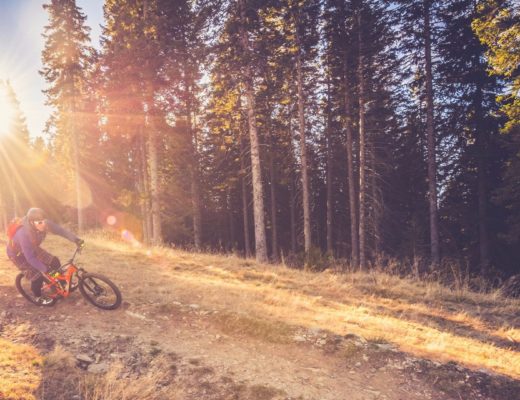Tree Planting Efforts Are Underway In Forests Across The Country And Around The Globe
On Oct. 25, 2019, social media influencers partnered with the Arbor Day Foundation to launch an initiative called #TeamTrees. Their goal was to raise $20 million for tree planting by Jan. 1, 2020. During the next two months, more than 800,000 unique donors from 200 countries and territories around the globe visited TeamTrees.org to make a donation. On Dec. 19, that goal was surpassed and the promise of more than 20 million trees became a reality.
Now the Arbor Day Foundation’s planting efforts are in full swing, as our goal is to plant all the trees funded through #TeamTrees by December of 2022. Nearly 30 projects have been selected for planting in 2020, and many more are being planned for the coming years. Following is an inside look at three of the projects benefitting from #TeamTrees this year.
Willamette River Basin
Home to Portland and the 187-mile-long Willamette River, the Willamette River Basin is located in northwestern Oregon. The river itself is home to aquatic wildlife including Chinook salmon, steelhead, and lamprey. The area also provides habitat for a wide range of plants and animals, in addition to supporting agricultural, aggregate, and recreation industries.
The Willamette River and its tributaries suffer from a history of poor practices and land use changes. Approximately 1,200 miles of streams in this watershed are listed as impaired due to excess nutrients, toxic substances, sediment, and elevated water temperature and are no longer able to support healthy salmon and trout populations. Strategic, large-scale tree planting is the only solution.
Earlier this year, 100,000 trees were planted to help reestablish riparian forests to ensure clean drinking water, improve water quality and habitat for aquatic wildlife, and provide critical habitat for the vast array of birds and other wildlife that rely on this area.
Tyndall Air Force Base
Tyndall Air Force Base — named in honor of World War I pilot 1st Lt. Frank Benjamin Tyndall — is located 12 miles east of Panama City, Florida. On the base is a large slash pine forest that was in the beginning stages of being restored to native longleaf pine stands. But one hurricane changed everything.
In October 2018, Hurricane Michael passed directly over Tyndall Air Force Base. The Category 5 hurricane caused major wind and surge damage, leaving 12,000 acres of pine forest with severe to catastrophic levels of wind damage.
While the Air Force base received federal funding for the initial cleanup effort, support was needed to replace the trees. Through this planting project, we are ensuring a healthy, forested future for this ground. A vigorous longleaf pine ecosystem will improve habitat for federally listed plant species (Godfrey’s butterwort and telephus spurge) as well as gopher tortoises and other wildlife species of conservation concern.
Rappahannock River Watershed
Home to cities including Fredericksburg, Culpeper, Falmouth, Orange, and Tappahannock, the Rappahannock River Watershed accounts for approximately 2,700 square miles of land in Virginia. It is home to one of the largest nesting bald eagle populations on the east coast as well as an abundance of other wildlife.
Read These Animals are Disappearing from North American Forests
Within the watershed, thousands of miles of streams are without riparian buffers. Some of the rivers are being polluted with nitrogen and phosphorus, and the watershed as a whole faces the challenge of development due to its proximity to Washington, D.C. Planting efforts in the Rappahannock River Watershed are key to helping this area thrive once again. These trees will grow to prevent erosion, sequester carbon, provide habitat for all life in the watershed, and give the waterways in the area much-needed riparian buffers.
A Brighter Future Through Trees
With each project we choose, we are confident that our planting partners are helping to ensure that we are planting the right trees in the right places for the right reasons. In fact, our ability to scale up planting efforts for projects of this size are because of the strong relationships we have fostered over the decades with a wide variety of partners just as dedicated to tree planting and care as we are.
These projects are only the beginning of the positive impact the #TeamTrees campaign will have on our world, and we’re excited to share these successes with all of our supporters.
Learn more about #TeamTrees projects.




Hopefully, the loggers will stay out of these forests. We need diversity of types of trees and ages of trees for them to do their job in moderating the climate and providing habitat. I hope we aren’t just planting trees so that the timber industry can come in and cut them all down in a couple or three decades.